Hardwood Flooring Installation Louisville KY
Fill in your details below - we'll reach out to schedule a free quote!
We will get back to you as soon as possible
Please try again later
Hardwood Flooring Installation Louisville KY
JD Flooring in Louisville, KY specializes in the installation of hardwood floors.
A family owned and operated business, JD Flooring has been in business for many years. With a commitment to quality craftsmanship, JD Flooring provides a wide range of hardwood flooring services to meet the needs of their customers.
From traditional hardwood floors to more unique installations, such as inlaid borders and Medallion patterns, JD Flooring has the experience and expertise to provide a beautiful and long-lasting hardwood floor for your home.
Whether you are looking for a new install or a refinished look for your existing hardwood floors, JD Flooring can help.
Contact us today for a free consultation.


Louisville Hardwood Flooring Installation Company
JD Flooring is a hardwood flooring installation company in Louisville KY.
We specialize in the installation of hardwood floors, laminate floors, and engineered floors.
We also offer a wide variety of services including floor sanding, floor refinishing, and floor repairs.
We are a family-owned and operated business that has been serving the Louisville area for many years.
We take pride in our workmanship and customer service, and we are dedicated to providing our clients with the highest quality products and services available.
If you are in need of hardwood flooring installation or repair, contact us today for a free consultation.
Hardwood Flooring Installation Contractors Louisville KY
If you're in the market for hardwood floors, you'll want to check us out at JD Flooring.
Our company is made up of hardwood flooring installation contractors in Louisville KY.
We specialize in all aspects of hardwood flooring and can help you choose the right type of wood for your home, install it, and finish it to your specifications.
So if you're in the Louisville KY area and are looking for hardwood flooring, be sure to contact us at JD Flooring. You won't be disappointed!

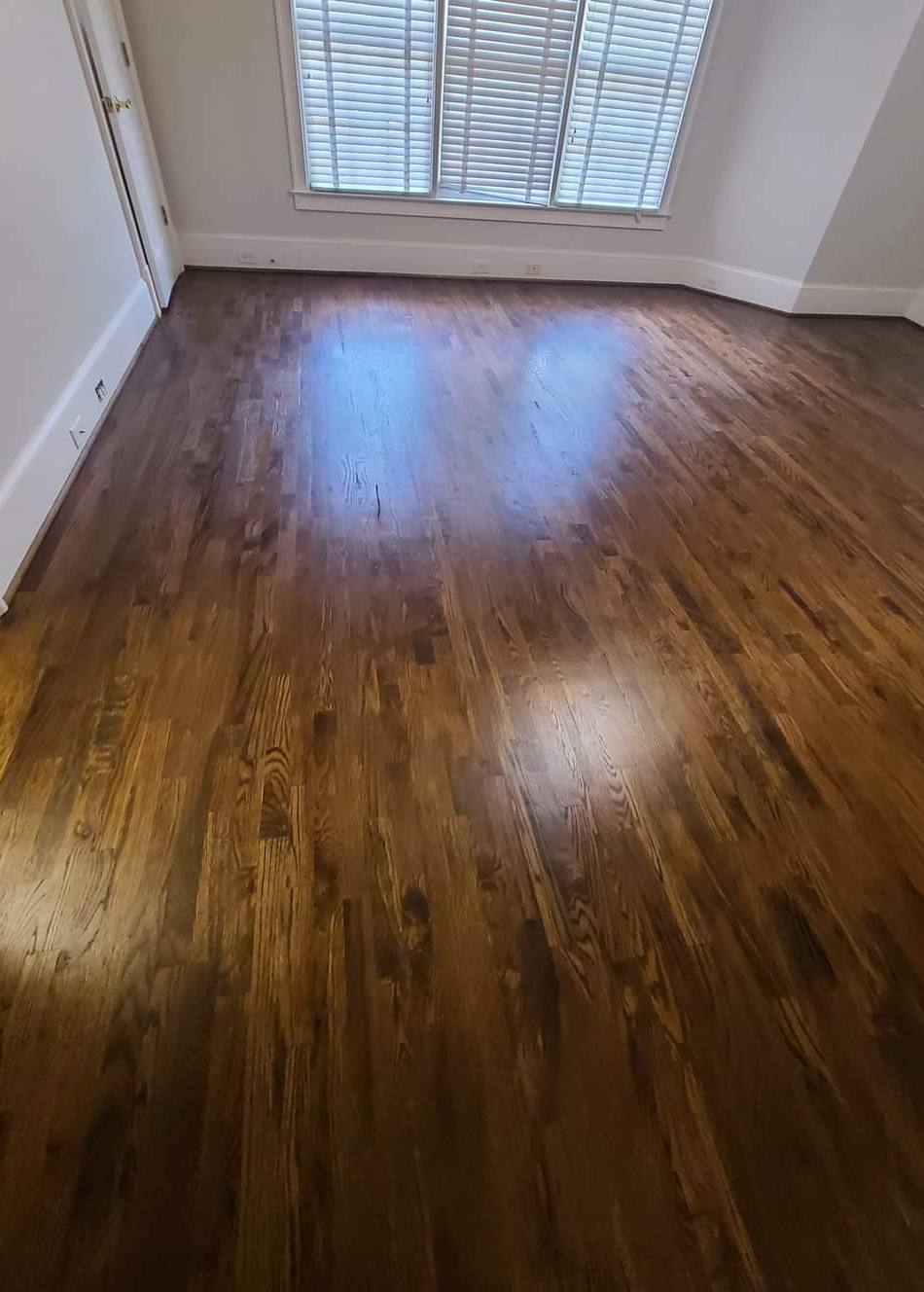
Types of Hardwood Flooring
When it comes to choosing hardwood floors for your home, there are several options available on the market.
Solid wood floors are made from a single piece of wood and can be sanded and refinished multiple times.
Engineered wood floors are made from layers of wood glued together and topped with a veneer of real wood.
Prefinished hardwood floors come with a factory-applied finish that is more durable than a traditional finish.
Solid wood floors are the most popular type of hardwood flooring, but engineered wood and prefinished hardwood floors are also popular choices.
Each type of flooring has its own advantages and disadvantages, read this section to learn more about each.
Solid Hardwood
Solid hardwood floors are a classic and elegant choice for flooring, and they can last for decades with proper care.
However, hardwood floors are not without their drawbacks.
One of the main disadvantages of hardwood floors is their cost.
Not only is the initial cost of hardwood floors higher than many other options, but they also require more frequent refinishing, which can add up over time.
In addition, hardwood floors are not as durable as some other choices, and they can be scratched or damaged by water.
However, many homeowners feel that the beauty and value of hardwood floors outweigh the disadvantages.
When properly cared for, solid hardwood floors can add warmth and character to any home.


Engineered Hardwood
Engineered hardwood flooring is a popular choice for many homeowners, thanks to its durability and stylish appearance.
However, there are some potential drawbacks to be aware of before making a purchase.
One downside of engineered hardwood is that it can be more difficult to repair than solid hardwood.
If a plank becomes damaged, it may be necessary to replace the entire floor, rather than simply sanding and refinishing the affected area.
In addition, engineered hardwood is typically more expensive than other types of flooring, such as laminate or vinyl.
However, many homeowners feel that the extra cost is worth it for the long-term beauty and durability of the material.
When installed and maintained properly, engineered hardwood can provide years of trouble-free service.
Prefinished Hardwood
Unfinished hardwood needs to be sanded, stained, and sealed on site, which can be time-consuming and messy.
Prefinished hardwood comes with a factory-applied finish, so it's ready to be installed as soon as it's delivered.
Prefinished hardwood is more expensive than unfinished hardwood, but it's also more durable.
The factory-applied finish is designed to resist scratches and scuffs, so your floors will look good for longer.
However, prefinished hardwood can be more difficult to repair if it gets damaged.
And because the finish is applied in a factory setting, there may be some variation in color from one plank to the next.

Hardwood Flooring Installation Process
The process for installing hardwood flooring can vary greatly depending on which type of hardwood flooring you choose.
That being said, there are some steps in the process that carry through each different type of hardwood.
Choose Your Flooring
The first step in the hardwood flooring installation process is for the customer to choose their wood flooring product.
This is a crucial starting point because the customer needs to decide on the style, color, and type of wood flooring that they want.
Once the customer has made their selection, the installer can come to the home and prep the floors for installation.
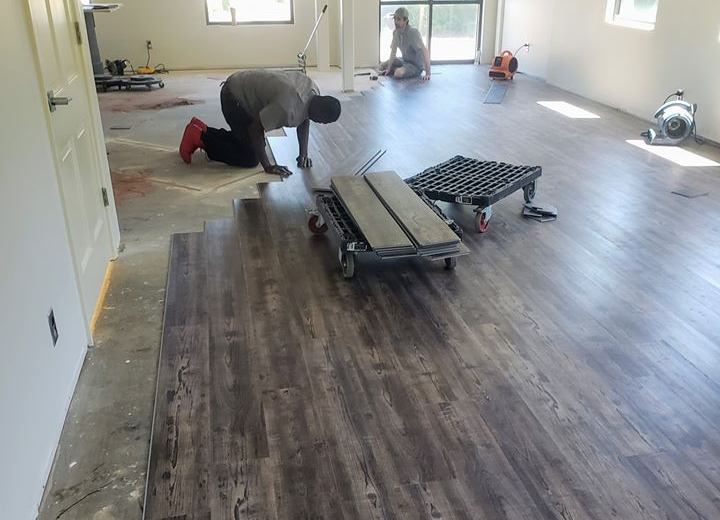

Acclimate The Flooring to Your Home
The second step in the hardwood flooring installation process is to acclimate the flooring to the installation area.
This is done by opening up the boxes of flooring and letting them sit in the room for roughly 48 hours before starting the install.
This allows the wood to adjust to the humidity and temperature of the room, which will help prevent it from shrinking or expanding once it is installed.
Prepare the Floor Installation Area
The third step in the hardwood flooring installation process is to prepare the floor installation area.
This is done by removing all furniture and other items from the room, and then cleaning the floor thoroughly.
Any existing nails or screws should be removed, and any gaps or cracks should be filled.
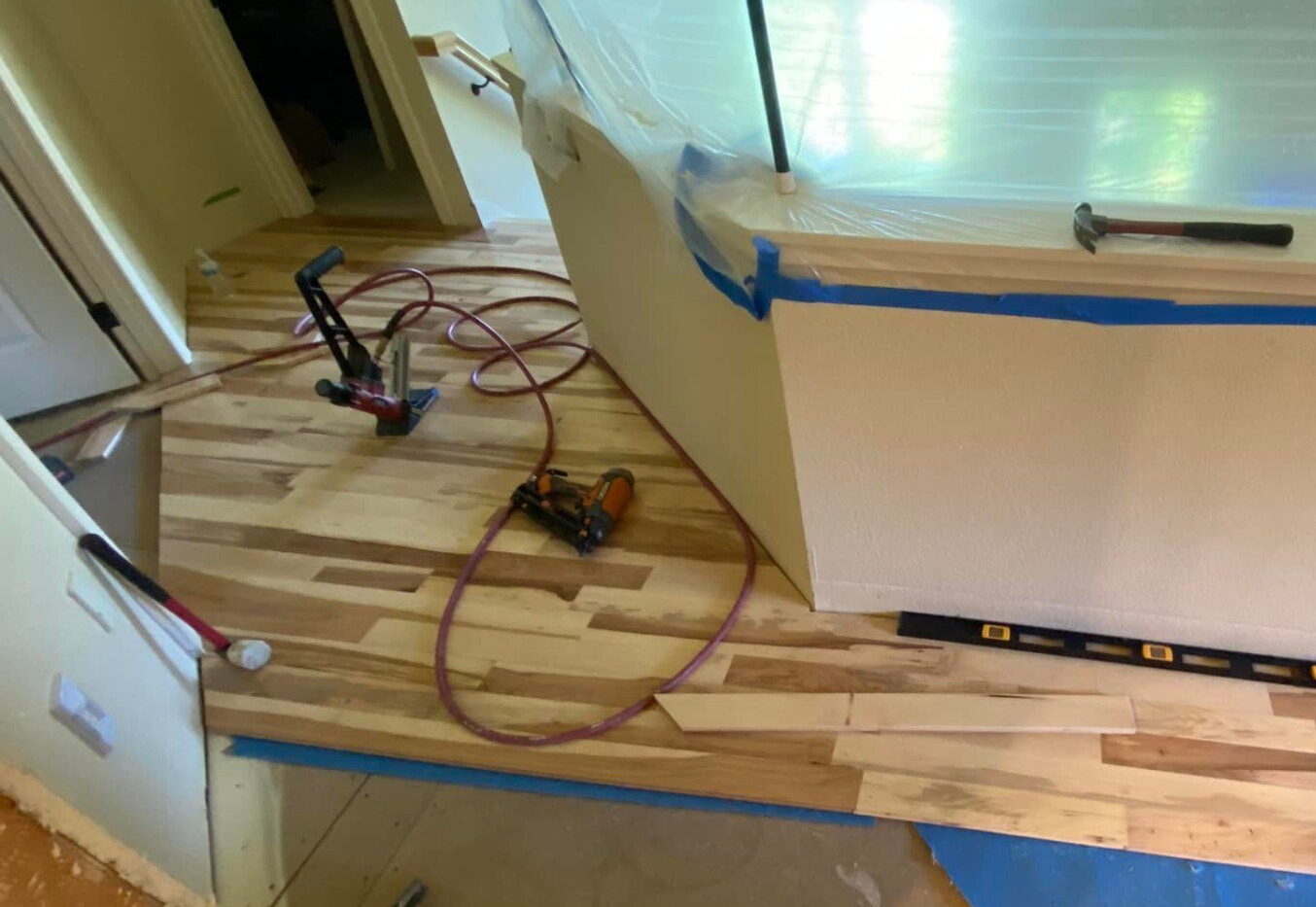

Layout the Flooring
The fourth step in the hardwood flooring installation process is to physically lay out the flooring.
We do this in order to map out the room and determine the best way to proceed with the installation.
With a large room, it is often best to start in the center and work our way outwards. This ensures that the flooring is evenly distributed and there are no visible seams.
Install the Underlayment
Installing underlayment is the fifth step in hardwood flooring installation.
Some people believe that this step is unnecessary, but it actually serves an important purpose.
Underlayment provides a layer of protection between the subfloor and the hardwood floors.
It helps to reduce noise, prevent impact damage, and insulate against heat and cold.
In addition, underlayment can make it easier to install hardwood floors over concrete or other difficult surfaces.
As a result, taking the time to install underlayment is well worth the effort.
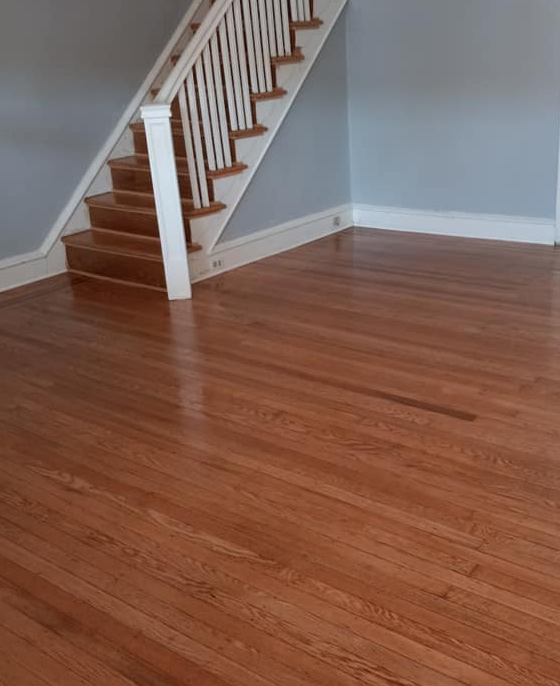
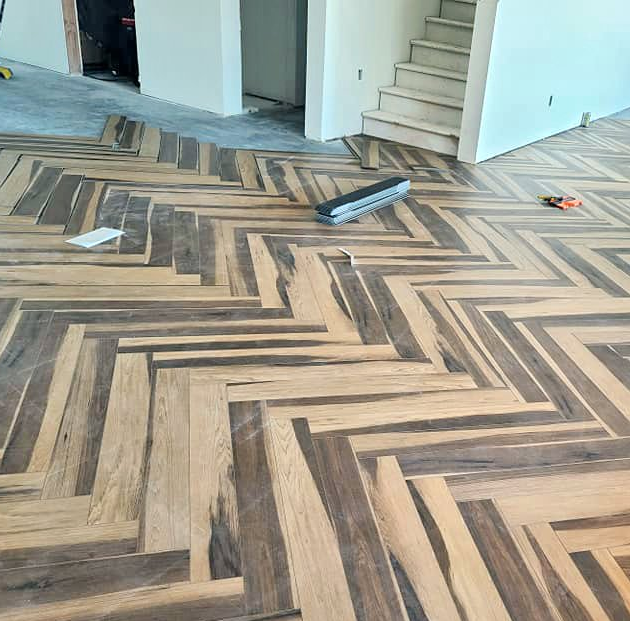
Install the Flooring
The sixth step in the hardwood flooring installation process is to install the hardwood flooring.
Some of the most important aspects of this process include making sure that the subfloor is clean and level, using the proper adhesives and fasteners, and allowing enough time for the adhesive to cure properly.
In addition, it is important to avoid using too much pressure when nailing the boards in place, as this can cause them to crack or split.
With careful attention to detail, our installation contractors will make sure the flooring is installed perfectly.
Finishing Touches
After your hardwood floors are installed, there are a few final touches that need to be completed in order to ensure a smooth, professional finish.
Sealing and sanding the floors is an important step in protecting your investment, and it will also help to ensure a long-lasting finish.
Adding baseboards is also important, as they not only add an additional level of protection but also provide a finished look.
Depending on the type of hardwood floors we have installed, we may also need to add trim or other finishing touches.
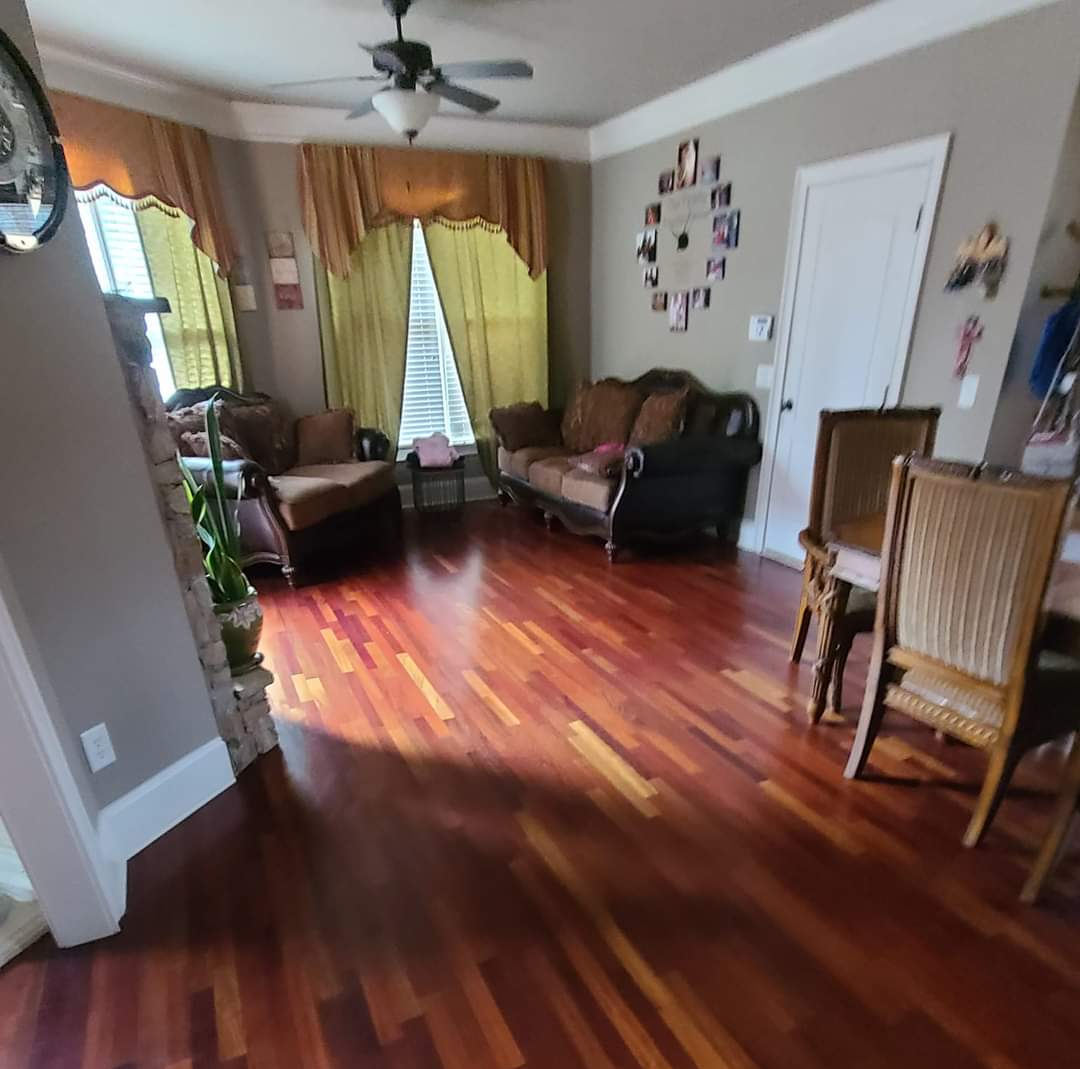

Benefits of Hardwood Flooring
Hardwood floors are a popular choice for many homeowners and businesses alike. There are several benefits to having hardwood floors installed.
First, hardwood floors are easy to clean and maintain. Unlike carpet, which can trap dirt, dust, and pet hair, hardwood floors can be easily swept and mopped.
Second, hardwood floors are durable and long-lasting. With proper care, hardwood floors can last for decades.
Third, hardwood floors add value to a home or business. Potential buyers are often willing to pay more for a property that has hardwood floors.
Finally, hardwood floors are available in a variety of colors and styles to suit any taste or budget.
Whether you’re looking for a classic or modern look, there’s a hardwood flooring option that’s right for you.
How to Maintain Hardwood Flooring
Now that we've installed your beautiful hardwood floors, you'll want to do everything you can to protect them and make them last. Here are a few tips on how to maintain your new hardwood floors:
- Sweep or vacuum regularly to remove dirt, dust, and debris.
- Use a damp mop or cloth to clean up spills. Avoid using excessive amounts of water, which can damage the wood.
- Place mats or rugs at entryways to help trap dirt and debris before it has a chance to get on your floors.
- Protect your floors from sunlight and heat exposure by closing blinds or curtains during the day.
- Remove your shoes before walking on your hardwood floors. This will help to avoid scratches and wear patterns.
By following these simple tips, you can help keep your hardwood floors looking beautiful for years to come.
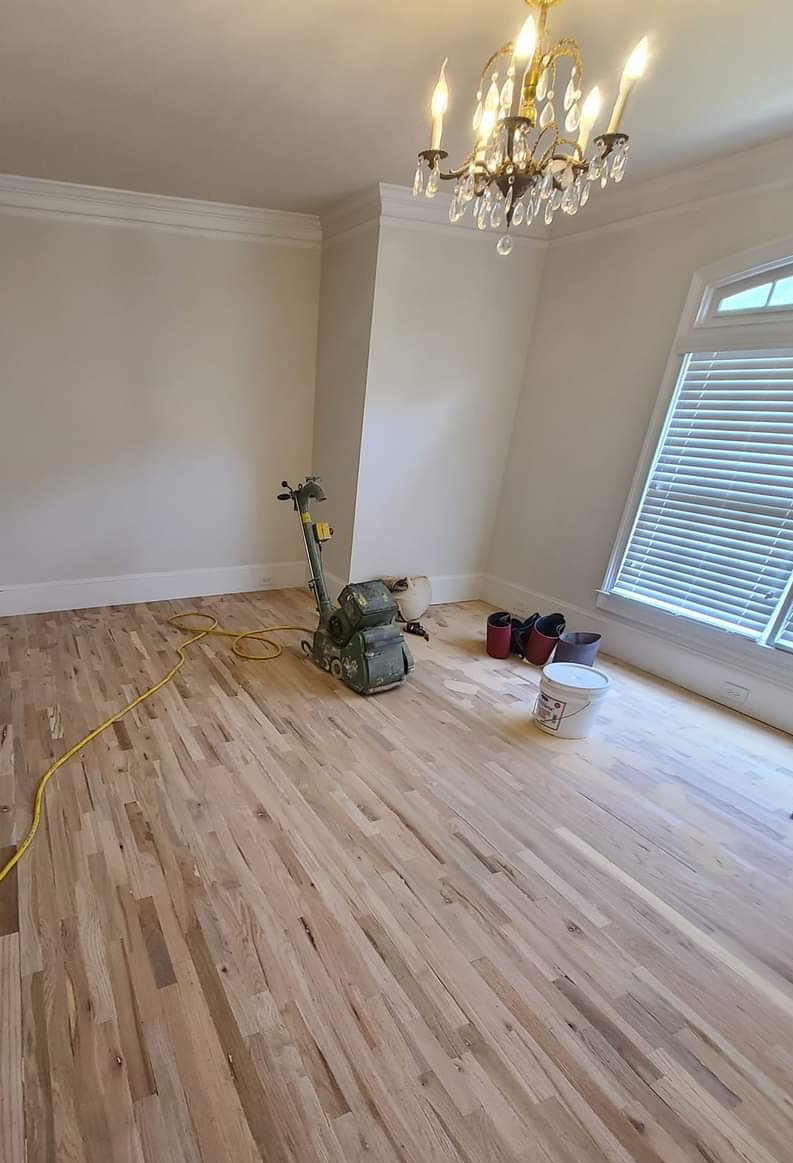
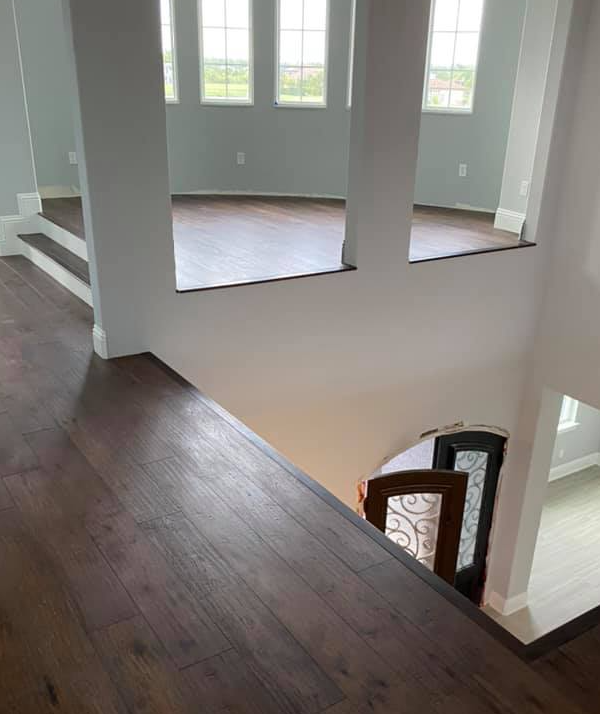
How Much Does Hardwood Flooring Installation Cost?
The cost of hardwood flooring installation can vary widely depending on a number of factors. The most important factor is the type of wood you select.
Hardwoods like oak and maple are more expensive than softer woods like pine, and they require more care and maintenance.
Another important factor is the size of your project. Larger rooms will obviously require more materials and labor, and this will drive up the cost.
Finally, the location of your project can also have an impact on cost. In general, areas with a higher cost of living will also have higher costs for labor and materials.
Hardwood Flooring Installation FAQs
How do I choose which type of flooring to install in my home?
When it comes to choosing new flooring for your home, there are a lot of factors to consider. Hardwood floors are classic and timeless, but they require regular maintenance and can be susceptible to damage from water and pets. Tile is durable and easy to care for, but it can be cold and hard on your feet.
Carpet is cozy and comfortable, but it can show stains more easily than other types of flooring. Ultimately, the best type of flooring for your home depends on your lifestyle and budget. If you have young children or pets, tile or hardwood might be the best choice for durability.
If you're looking for something that's easy to care for, laminate or vinyl might be a good option. And if you're looking for a warm and inviting feel, carpet might be the best choice for you.
How thick is hardwood flooring?
Hardwood flooring typically comes in planks that are 3/4 of an inch thick. However, thinner options are also available. Some homeowners prefer thinner planks because they are easier to install and offer a more elegant look. Others prefer thicker planks because they are more durable and can better withstand foot traffic.
When choosing the thickness of your hardwood flooring, it is important to consider both your budget and your needs. Thicker planks will cost more upfront, but they may save you money in the long run by lasting longer.
Ultimately, the best thickness for your hardwood floors depends on your individual circumstances.
How long does it take to install hardwood floors?
Hardwood floors are a classic choice for any home, and they can be installed relatively easily. However, there are a few things to keep in mind when planning your installation. First, you'll need to choose the type of hardwood that you want. There are many different species of wood, and each has its own unique grain pattern and color.
Once you've made your selection, you'll need to measure the room and calculate the amount of material you'll need. Next, you'll need to prepare the subfloor by removing any old flooring and repairing any damage. Once the subfloor is ready, you can begin installing the hardwood planks.
Most installations take anywhere from a few hours to a few days, depending on the size of the room and the experience of the installer. With a little planning and patience, you can enjoy beautiful hardwood floors in your home for years to come.
What is the recommended underlayment for hardwood flooring?
Any time you install hardwood floors, it's important to use an appropriate underlayment beneath the boards. This underlayment serves several purposes: it cushions the flooring, provides insulation, and helps to reduce noise.
When choosing an underlayment, look for a product that is specifically designed for hardwood floors. Many types of underlayment are available, but not all of them are suitable for hardwood.
For example, products that contain asphalt can damage the finish on hardwood floors. foam underlayments are a popular choice for hardwood floors, as they provide good cushioning and insulate well against sound. Be sure to follow the manufacturer's instructions when installing any type of underlayment.
Reach Out For a Free Quote
Send us a message using the form below, and we’ll get back to you as soon as we can.
We will get back to you as soon as possible
Please try again later
Copyright © 2015-2022 JD Flooring Installers | All rights reserved
Contractor Website by Curated Leads
